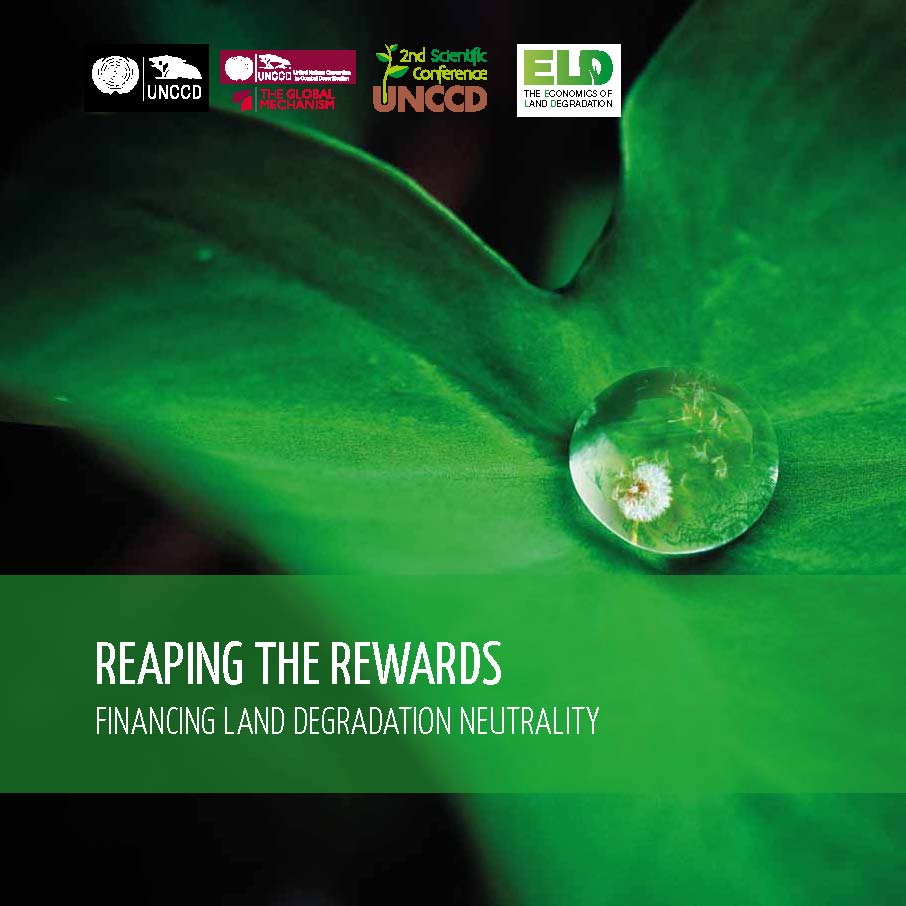Location
The United Nations Convention to Combat Desertification in Those Countries Experiencing Serious Drought and/or Desertification, Particularly in Africa (UNCCD) is a Convention to combat desertification and mitigate the effects of drought through national action programs that incorporate long-term strategies supported by international cooperation and partnership arrangements.
Members:
Resources
Displaying 321 - 325 of 586Reaping the Rewards: Financing Land Degradation Neutrality
As a result of poor management practices and contrary to logic; finance and investment in food production has been one of the main drivers of land degradation by transforming natural ecosystems and favoring short-term profits over long-term sustainability. For all sectors that rely on the land, “business as usual” comes with rising costs and new risks. Risks we cannot afford in the post-2015 world.
Climate change and land degradation: Bridging knowledge and stakeholders
The UNCCD 3rd Scientific Conference, held from 9 to 12 March 2015 in Cancún, Mexico, used a novel, participatory approach to explore the various forms of knowledge that link biophysical and social systems, the vulnerabilities of these systems and potential pathways to reach sustainable land management.
Drylands: Sustaining Livelihoods and Conserving Ecosystem Services. A policy brief based on the Sustainable Management of Marginal Drylands (SUMAMAD) project
The drylands of the world occur on every continent, covering some 41% of the terrestrial surface. One third
of humanity inhabits these harsh degrading landscapes, eking out a living through adaptive processes that
have served them well until recent increases of land degradation. Growing pressures from population growth,
Calculation of the EU Bioenergy land footprint: Discussion paper on land use related to EU bioenergy
targets for 2020 and an outlook for 2030
This paper explores the land footprint related to EU bioenergy consumption and aims to contribute to the discussion on how EU bioenergy targets impact on scarce global land resources, both cropland and forest areas. In the last decade, demand for EU bioenergy has risen significantly, largely driven by political targets and subsidies. Our calculations show that the total land footprint related to EU bioenergy is likely to expand from 44.5 Mha (an area of the size of Sweden) in 2010 to 70.2 Mha (an area of the size of Poland and Sweden combined) in 2030.
Climate Change and Risk Management: Vulnerability analysis of coastal marine infrastructures in Latin America.
The objective of the study is to provide methodological instruments to governments in Latin America to facilitate the identification of the vulnerability of the physical infrastructure of coastal marine areas to climate change and facilitate the identification of adaptation options. It sets out the main ideas covered, that takes the experiences, lessons learned and best practices in the beneficiary countries of the EUROCLIMA programme in order to estimate and reduce the vulnerability of coastal marine infrastructures in the face of climate change.



